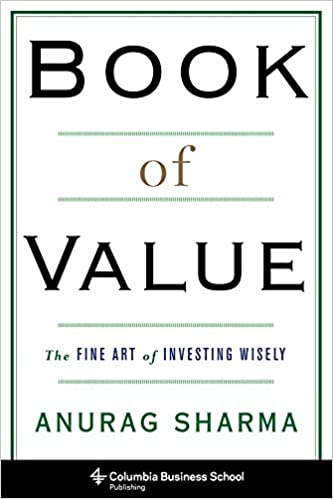Financial markets are noisy and full of half-baked opinions, innuendo, and misinformation. With deep insights about investor psychology, Book of Value shows how to apply tools of business analysis to sort through the deceptions and self-deceptions in financial markets. Anurag Sharma joins philosophy with practical know-how to launch an integrated approach to building high-performance stock portfolios.
Investors at all skill levels should learn to be mindful of their psychological biases so they may better frame investment choices. Book of Value teaches novices that investing is not a game of luck but a skill—and it teaches the emotional and analytical tools necessary to play it well. Intermediate investors learn how to effectively control emotions when investing and think strategically about their investment program. Advanced investors see the formalization of what they already know intuitively: that the philosopher's methods for seeking truth can be profitably applied to make smart investments. A groundbreaking guide full of lasting value, Book of Value should be on the shelf of anyone who takes investing seriously.
- Table of Contents
- Preface
- Acknowledgments
- Prologue: A Short History of Investing
- Introduction: Noise
- Part I: Illusion
- 1 Opinions and Beliefs
- 2 Correlation of Errors
- 3 The Dark Arts
- 4 Purveyors of the Dark Arts
- 5 Victims of the Dark Arts
- Part II: Verity
- 6 Logic—Data—Doubt
- 7 Investing as a Negative Art
- 8 Shaping the Investment Thesis
- 9 How to Be a Wise Investor
- 10 The Art of Looking
- Part III: Foundations
- 11 Price and Value
- 12 How to Value a Business
- 13 Risk and Uncertainty
- 14 The Simple Math of Valuation
- 15 Yield—Stability—Strength
- Part IV: Diligence
- 16 Depth Analysis
- 17 Dive for Strength
- 18 Define Good Business
- 19 Watch the Game
- 20 Meet the Managers
- Part V: Policy
- 21 Diversification
- 22 Another Way to Portfolio
- 23 Core Holdings
- 24 Growth
- 25 The Buffett Portfolio
- Conclusion: Noise Control
- Notes
- Bibliography
- Index

